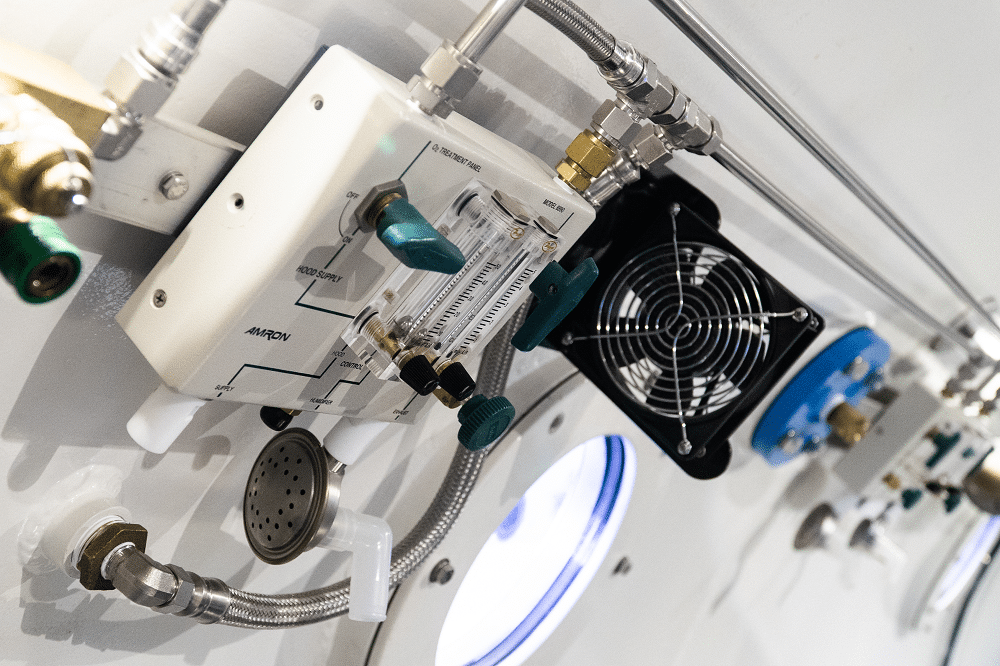Hyperbaric oxygenation (HBO₂) involves breathing 100% oxygen under elevated ambient pressure in a hyperbaric chamber, thereby dissolving oxygen in the plasma. This results in an increase of arterial partial pressure of oxygen (pO₂). Though well established in experimental studies, HBO₂ treatment for ischemic stroke is still under discussion. From 2002-2014 HBO₂ (2.2 bar, 90 minutes one/day; average number per patient: 4.7) was applied in 49 consecutive patients (32 males, 17 females, mean age: 68.8 years, range 31.2 – 83.9) with acute neurological deficit following cardiac surgery (CABG 15; combined surgery 14; valve surgery 11; aneurysm repair 8;
Stroke
Hyperbaric Oxygen Therapy (HBOT) Research for Stroke
Current treatment of central retinal artery occlusion: a national survey.
Central retinal artery occlusion (CRAO) is an ophthalmological emergency, the retinal analog of a stroke. To date there is no consensus or national guidelines on how this disorder should be managed. As academic neurologists and ophthalmologists treat CRAO frequently, we set out to understand how these clinicians approach patients with CRAO with a national survey. We identified university-associated teaching hospitals offering vascular neurology, neuro-ophthalmology and/or retina fellowships in the US and asked the directors of the programs to respond to questions in an open response format to profile the acute management of CRAO at their institution.
Sirt1 mediates improvement in cognitive defects induced by focal cerebral ischemia following hyperbaric oxygen preconditioning in rats.
Hyperbaric oxygen preconditioning (HBO-PC) has been proposed as a safe and practical approach for neuroprotection in ischemic stroke. However, it is not known whether HPO-PC can improve cognitive deficits induced by cerebral ischemia, and the mechanistic basis for any beneficial effects remains unclear. We addressed this in the present study using rats subjected to middle cerebral artery occlusion (MCAO) as an ischemic stroke model following HBO-PC. Cognitive function and expression of phosphorylated neurofilament heavy polypeptide (pNF-H) and doublecortin (DCX) in the hippocampus were evaluated 14 days after reperfusion
Hyperbaric oxygen-associated seizure leading to stroke.
Oxygen toxicity seizures are a well-known complication of hyperbaric oxygen treatment (HBOT). Until now, there have not been any reported cases of an acute ischaemic event (stroke) as the result of a HBOT-associated oxygen toxicity seizure. We report an event in which a seizure and stroke occurred together and consider that the stroke may have been caused by seizure-induced demand ischaemia. This challenges the generally held view that oxygen toxicity seizures in the clinical hyperbaric setting are benign. A discussion of the literature on the subject of seizure-induced brain injury is included. Risk factors for cerebrovascular disease should be taken into consideration in determining treatment pressures for HBOT, as reducing pressure reduces seizure risk.
Cerebrospinal vascular diseases misdiagnosed as decompression illness: the importance of considering other neurological diagnoses.
Abstract: The diagnosis of decompression illness (DCI), which is based on a history of decompression and clinical findings, can sometimes be confounded with other vascular events of the central nervous system. The authors report three cases of divers who were urgently...
Normal carboxyhaemoglobin level in carbon monoxide poisoning treated with hyperbaric oxygen therapy.
Abstract: Throughout the world both intentional and inadvertent exposure to carbon monoxide (CO) remains an important public health issue. While CO poisoning can be lethal, the morbidity is predominantly due to nervous system injury. A previously healthy 22-year-old...
NSL_ 32671: Retraction notice to Early hyperbaric oxygen therapy may improve the long term neurological consequences of diabetic patients suffering from hemorrhagic stroke [Neuroscience Letters 644 (2017) 83-86].
Abstract: Xu, Wei, Fan, Wang, Zhou, , , , (2017). NSL_ 32671: Retraction notice to Early hyperbaric oxygen therapy may improve the long term neurological consequences of diabetic patients suffering from hemorrhagic stroke [Neuroscience Letters 644 (2017)...
A Systematic Review of the Causes and Management of Ischaemic Stroke Caused by Nontissue Emboli.
Abstract: The inadvertent or purposeful introduction of foreign bodies or substances can lead to cerebral infarction if they embolize to the brain. Individual reports of these events are uncommon but may increase with the increased occurrences of their risk factors,...
Hyperbaric Oxygen Environment Can Enhance Brain Activity and Multitasking Performance.
Abstract: Background: The Brain uses 20% of the total oxygen supply consumed by the entire body. Even though,

